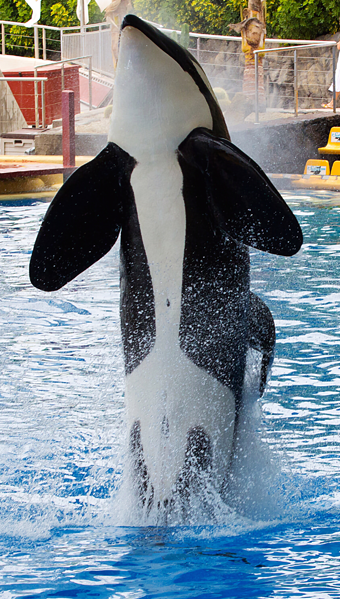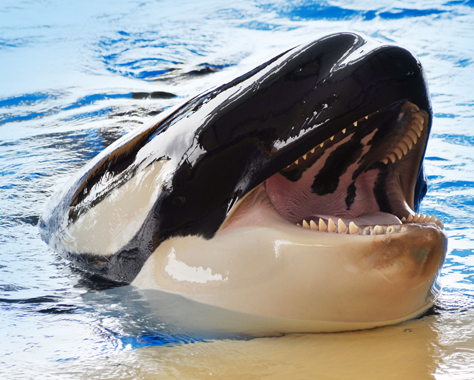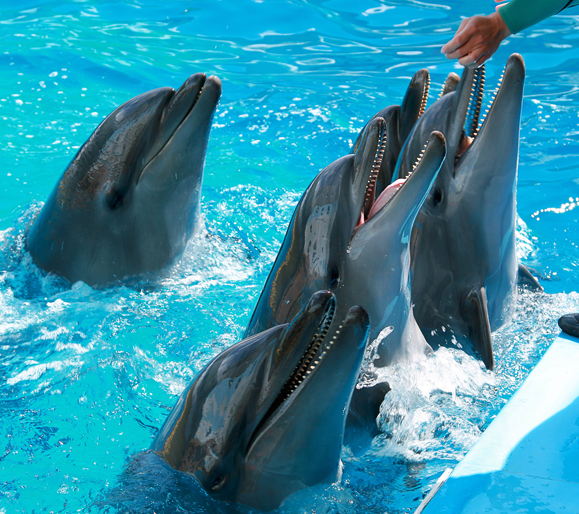buy Clomiphene safely online 7 June 2020
Khārān Self-driving vehicles are no longer science fiction. They are on public roads. A combination of sensors, hard-coded control software, and AI-related decision-making algorithms have moved the “driver’s seat” from leather and fabric to silicon chips. Control mechanisms have become invisible.
The Future of Intelligent Vehicles
Most people understand the concept of a computer-driven car, at least in a general sense. But have they thought about where this technology might lead?

I don’t mean the more obvious aspects of reading while you’re driving, controlling the car by voice commands, avoiding accidents due to human error, or worrying about GPS bugs that might land you in a dark alley or the wrong side of town. Nor am I talking about sneaking a beer because you don’t have to worry about running into a concrete barrier or oncoming car.
What I see for the future of self-driven vehicles is a biological model based on dolphins. One that goes beyond the individual vehicle.
The Cetacean Connection
Humans can connect with dolphin intelligence. We have a place in our hearts for dolphins and they are attracted to us. But dolphin communication is still mostly a mystery. They learn our languages better than we learn theirs.
In my high-school summer-job days, one of my jobs was working at an aquarium, microphone in hand, narrating the whale shows (killer whales are not really whales, they are orcas, but we called them whales). I learned many surprising facts about whales, dolphins, and sealions that I tried to convey in an engaging and educational manner. I also observed these charming and complex animals having good days and bad days.
One day, the biggest orca was feeling under the weather. He didn’t want to do the show. He went through the motions with lackluster spirit, and then he stalled when the trainer asked him to do a giant leap. He substituted a low leap—you could barely call it a leap.
The trainer gave him a second chance, but the orca offered another sluggish hump, barely breaking the surface, and the trainer became annoyed. He had studied psychology and he knew if he rewarded the orca’s behavior with a bucket of fish, the next performance might be the same or worse, so he did something I had never seen before… he turned his back and slowly, deliberately, walked away with the fish. The audience pays for the show, so this was a gamble. The trainer would have to sacrifice one show for the sake of future customers… but he was resolute. The game was over.
I was young, still in my teens. I hadn’t thought much about the ethics of aquariums, I thought only of their educational value, but what happened next was eye-opening.
When the orca saw his dinner disappearing, he charged after the trainer, frothing up the water along the edge of the pool, with his head well above water.
The trainer pointedly ignored him and kept walking. The orca then sped to the other end of the pool, turned, swished his tail to pick up speed and executed the most beautiful series of dolphin leaps I have ever seen. The trainer didn’t even look around. He turned the corner toward the supply room.

Now the orca was seriously worried, determined to get the trainer’s attention and his reward of fish. So he sped to the far end of the pool, veering around a smaller female orca and the gray dolphins, dove as deep as he could, whipped his tail to propel his immense body up to full speed and… right next to the trainer at the far end of the pool came completely out of the water in the most incredible giant leap I have ever seen. He landed with a mighty splash that poured a tsunami over the delighted audience.
The trainer didn’t even glance around. He walked into the supply room and shut the door.
The orca hovered at the edge of the pool, nose out of the water, waiting for the door to re-open, thinking he had made up for his previous lapse. He had, after all, just given the performance of his life.

But the door didn’t re-open until it was time for the next show, an hour later.
From that point on, the orca gave his usual excellent performance. Most of the time, he enjoyed the hourly shows, but it was never the same as the adrenalin-charged series of leaps that the trainer never saw. His extra effort inspired me to learn more about orcas, and how they live in the wild, and I tried to incorporate this information into my narrative at the whale shows.
The audience seemed to enjoy the additional information in the commentary, until I started talking about dolphin sonar. Then their eyes would glaze over, so I dropped it from the narrative… but I never lost interest in the subject.
How Dolphins See
Even though we feel a kinship with these intelligent creatures, a dolphin’s world is very different from ours.
If you put a toy in a box and ask a dolphin to identify the toy, it doesn’t try to peek in the box with its eye. Instead, it sends out signals from a biological sonar to probe the contents of the box. Dolphins can tell you what’s inside by selecting a picture of the item from a set of flash cards. They can even distinguish one material from another in objects of similar shape.

This is not too hard to comprehend either, if you have a basic understanding of sound waves. It’s similar to the way bats navigate in the dark by sending out chirps that echo back to build up a ‘picture’ in their heads of their environment.
But where it gets elusive is when you consider that dolphin communication is shared. If one dolphin sends out a signal, the waves that radiate back are apprehended by all the dolphins. You can’t “secretly” probe something. It’s group-sight.
If all the dolphins signaled at the same time, it would be cacophony, with one dolphin’s signals drowning out the others. If they want to sense their world in a rational, comprehensible way, they have to coordinate those signals so they don’t all ‘talk’ at the same time.
The Concept of “Self”
This is what I was thinking when I heard that smart cars were now driving on public roads. A self-driven car is only the beginning. Inter-communicating cars—that is the future. But it’s not as easy as just adding sensors and telecommunication devices—you have to coordinate the signals in much the same way as a nervous system coordinates the different parts of a body. Then the concept of the “self-driven” vehicle becomes an anachronism, with the concept of “self” subsumed into the whole.
Maybe that’s the way VMS research is headed. Research was historically a solitary pursuit. The 1940s Study Group made a collaborative effort with the limited resources available, but there were many hurdles to medieval research in pre-Internet days.
The VMS mailing list was a good start in terms of collaboration, but the format is not as flexible as a media-ready platform. Now we have the Voynich.ninja forum, where imagery can be shared and research can be read within minutes of being posted. Nick Pelling blogged an informative article about preprint servers. Scientists are enjoying unprecedented access to information and opportunities, a blessing in a time of pandemics.
Rene Zandbergen is gradually building up a historical resource of what we know, but I’m not sure we’ve come up with the best format yet for what-we-suspect but don’t quite know—a significant challenge considering the diversity of opinions on every small detail of the VMS. I keep finding posts from a few years ago that I forgot I had written.
What might be helpful is a visual clickmap of the major areas of VMS research linked to the major threads dealing with that subject. This is not a small project. It might take the cooperation of the whole community to make it happen, but it might be a useful tool to prevent reposting of the same info that was posted years ago.
J.K. Petersen
© Copyright 7 June 2020, J.K. Petersen, All Rights Reserved

This was seriously interesting, I didn’t know about the “group seeing” thing. They must have whole systems of social interactions associated with it that we can never imagine.
Right now I would prefer to see all marine animal shows banned outright, but well this was different in the past; I certainly would also have enjoyed an opportunity like that.
And I agree that the VM will likely be solved in a dolphin kind of way. Can’t do this alone. And it doesn’t take too kindly to most solo researchers…
I strongly suspect that we’re asking the wrong questions both of the VMs and of the historical evidence.
The times we have collectively made progress are when we have found a tiny detail – a handshake, a sleeve, a hat, an inverted T-O map – and pursued that relentlessly.
Perhaps the right questions to be asking are to do with unearthing yet more tiny details: big-picture / novelistic stuff has yielded basically nothing, as far as I can see.
Thanks for your comment, Nick.
I was thinking in terms of tools, research tools that might help us better coordinate our efforts. For example, we have transcripts, we have scans, we have the blogosphere…
What we don’t have is a visual guide, tied in to scans, of what has been written or discovered about any specific part of the manuscript. Both MarcoP and KGheuens have mentioned that we sometimes forget what we have done in the past, that we sometimes even go in circles. I’ve also noticed that I have forgotten some of the things I posted in the past, and what others have written. Then we start pursuing the same avenues again—spinning our wheels.
So… wouldn’t it be nice to go to a scan of a VMS folio and click on any specific part of it and have a clickmap direct us to links (or a map of links) that deal with that specific part of the VMS?
It would make it easier to see what’s been done, to refresh our memories, and work out what has not been done (or not been “done” enough). Right now, trying to find a specific thread on the forum is difficult because every thread mentions the same words, the same concepts. We either get no hits or far too many. If we could click our way through a visual interface, from a specific folio, it might make that process more efficient.
It’s too much work for one person, but if we crowdsource, maybe in a year or two we’ll have something that will benefit everyone.
Nick has nailed it. It is in the tiny, or not so tiny, like cosmic, details,
More than that! Add to the list!! What else is there? There is more than just the inverted T-O Earth in the cosmos. There are the stars, and the great beyond. There are cloud bands, There are cosmic boundaries. And whatever else that is (Shirakatsi). There is the c. 1410 version of Oresme (BNF Fr. 565) originally in the Duke of Berry’s library. The ‘Berry Apocalypse’ has cosmic boundaries consisting of a simple nebuly line. The Berry library also contains the ‘Romance of Melusine’.
There is a second literary connection between the duke and Melusine in “Tres Riches Heuers” .
In March Melusine,, as a dragon, flies above the tower of the castle of Lusigan. The connection of Melusine with the House of Luisignan is one of the primary versions of her myth.
During the Hundred Years” War, Jean, Duc de Berry, was given the castle of Luisignan,, which he then proceeded to take from the English. As referenced above.
And more importantly, one of those tiny details, there is another version of the Melusine myth. She was held to be an ancestress to the rulers of Luxembourg . Jean de Berry’s mother was from the Luxembourg line. This tradition was carried by all the Valois dukes and their descendants. Philip the Good had a display featuring Melusine at the Feast of the Pheasant’ in 1454.
An then there is the ‘Melusine” image in Harley 334 fol 57, dated to the second quarter of the 1400s. Also produced in Paris. The same text as was originally connected with the with the VMs cosmic comparison.
There is the comparison of the Golden fleece (not my idea).
There is the interpretation of the critter of VMs f80v as a version of an Agnus Dei image supported by the presence and the traditional interpretation of the nebuly line.
There is the detail, as seen in the VMs cosmos, that structure predominates over altered appearance, and that occurs again in f80v in the comparison with BNF Fr 13096 f 18, which was in the Library of Philip the Good, Duke of Burgundy.
Something is happening that seems to involve access to certain sources that seem to focus on particular texts in specific libraries within a viable, historical context. Furthermore the traditions that form the background for the creation of these VMs illustrations have been intentionally manipulated to create ambiguity and visual dissimilarities. The artist has hidden traditional details, the details of traditions all but lost. These traditions can be recovered and the list is growing.
R. Sale, thank you for your comments.
_________________________________________
For new readers who are interested in this topic but are unfamiliar with the myth of the Melusine or golden fleece, here are some blogposts with illustrations:
Jan. 2016: Melusine & Lauber Studio: https://voynichportal.com/2016/01/25/sirens-and-sailors-and-the-lovely-melusina/
Mar. 2016: Melusine and anatomy: https://voynichportal.com/2016/03/15/sex-procreation-in-the-voynich-manuscript/
Mar. 2016: golden fleece & Melusine: https://voynichportal.com/2016/03/31/fleeced/
20
Apr. 2016: Theriac & golden fleece: https://voynichportal.com/2016/04/26/ther-i-c-galen/
Feb. 2018: golden fleece & Rosenbergs https://voynichportal.com/2018/02/18/brotherhood-and-books/
Jun. 2019: golden fleece & Agnus Dei https://voynichportal.com/2019/06/15/pinning-down-the-pangolin/
Jul. 2019 Agnus Dei & maybe they are not elements in the Aristotelian sense, but more like calamitous elements from the Bible https://voynichportal.com/2019/07/27/fire-ice/